|
Warfare on the high seas was played out very similar to warfare on land. Both sides would form for the attack; the leader on his flag ship placing
himself in the center, possibly having some other vessels tying off to his to form a fighting platform. Outlying vessels would approach enemy vessels
and their leader firing missile weapons to weaken their strength and clear a path for boarding. If an individual vessel was isolated it would be
grappled and boarded where the battle would continue in hand to hand fighting. Once flanking vessels had been cleared from the enemy's fighting base
vessels would then attack any vessels lashed to the outside of the based and take them one by one, cutting them free as they were taken. As the base
shrank, the attackers would continue to fire missiles into the defenders to keep them pinned down. It is this phase of the battle that becomes more like
a land battle. Shield walls are formed and the attacker makes attempts to break it till the defenders are defeated, surrender or dove overboard to their
deaths.
With the coming of the high sided vessels and castles the dynamics of the battle began to change. Missile fire became the primary means of attack and
boarding the final act. It is these high-sided vessels that are leading the longships and their like into decline. There are stories of a Dak being
attacked by four pirate vessels of the longship kind. They pursued the Dak for a full watch, nearly decimating its crew with missile fire. However, as
the Dak approached a safe harbor they broke off and the Dak was able to limp into port with its cargo intact and only four of its crew unharmed, the
rest being dead or wounded.
|
|
Vessels From Pilot's Almanac
|
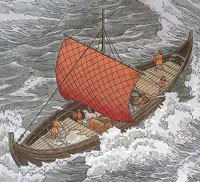
|
Nivik:
This vessel's effectiveness has been increased by the addition of stern and fore castles. Without these it would be unable to have much
effect on higher sided vessels. See 'Sea Trade Lanes' for a full description of the Nivik.
|
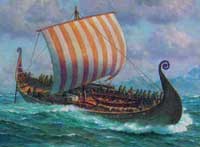
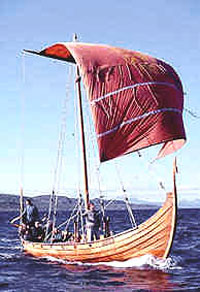
|
Longship:
The Ivinian Longship is the finest fighting vessel of its time. Long and sleek they are capable of fast speeds using oars or a square sail.
The longest vessels 100 feet or more are usually called serpents and owned by only the wealthiest nobles. The smaller craft are called
warboats and the backbone of the Ivinian fleets and raiding parties. While not normally used for mercantile operations, they can easily do
so after a successful raid. Although fast and stable, their main drawback is their height.
In Hârn, the maritime kingdoms have developed their own type of Longship, calling them galleys. These vessel look similar to the
Ivinian vessels; however, they are not as sleek and rarely get as large as the serpents. To offset the height problem, they usually have
stern and fore castles installed, as the Nivik above. Like the Ivinian vessels, their main advantage is their speed and ability to chase
down sailing vessels.
|
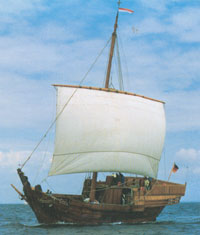
|
Dak:
Like the Nivik, Hulc and Karune the Dak is primarily a merchantman; however, it too has had castles added to its superstructure to provide a
fighting platform for men armed with missile weapons and to provide additional height over its adversaries. See
'Sea Trade Lanes' for a full description of the Dak.
|
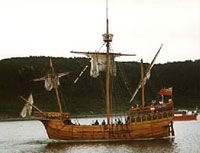 > >
|
Karune:
Like the Nivik, Dak and Hulc the Karune is primarily a merchantman; however, it too has had castles added to its superstructure to provide a
fighting platform for men armed with missile weapons and to provide additional height over its adversaries. See
'Sea Trade Lanes' for a full description of the Karune.
|
| |
|
|
A New Vessel For Northwest Lýthia
|
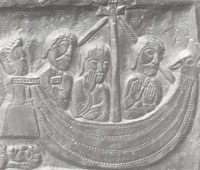
|
Hulc:
Like the Nivik, Dak and Karune the Hulc is primarily a merchantman; however, it too has had castles added to its superstructure to provide a
fighting platform for men armed with missile weapons and to provide additional height over its adversaries. See
'Sea Trade Lanes' for a full description of the Hulc.
|
|